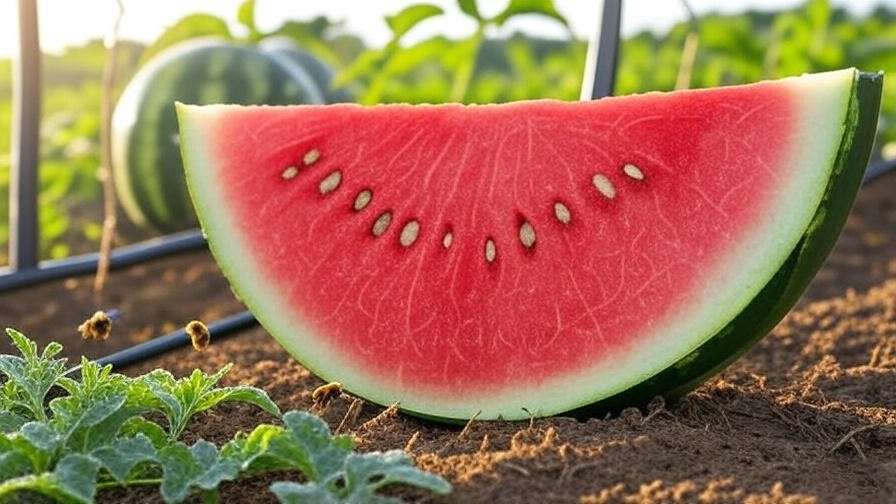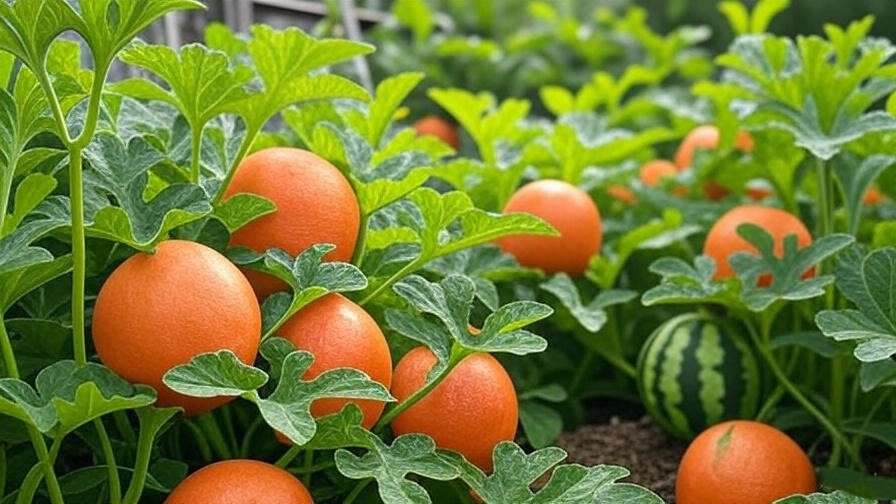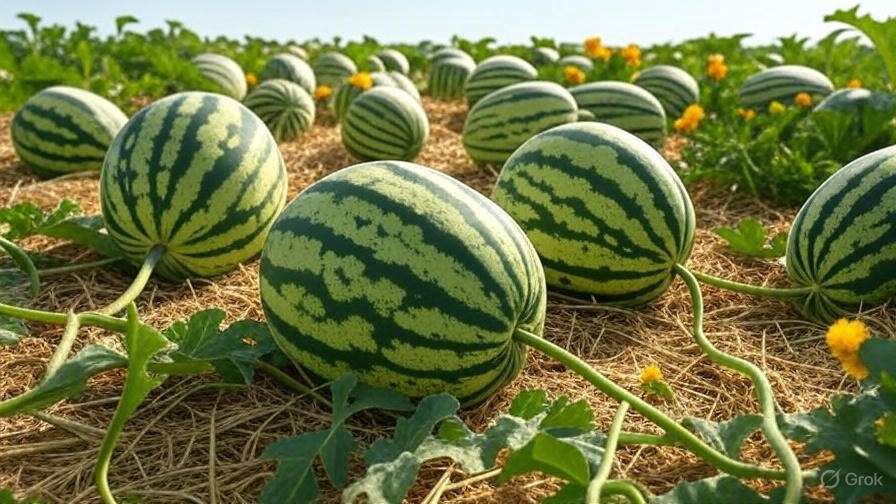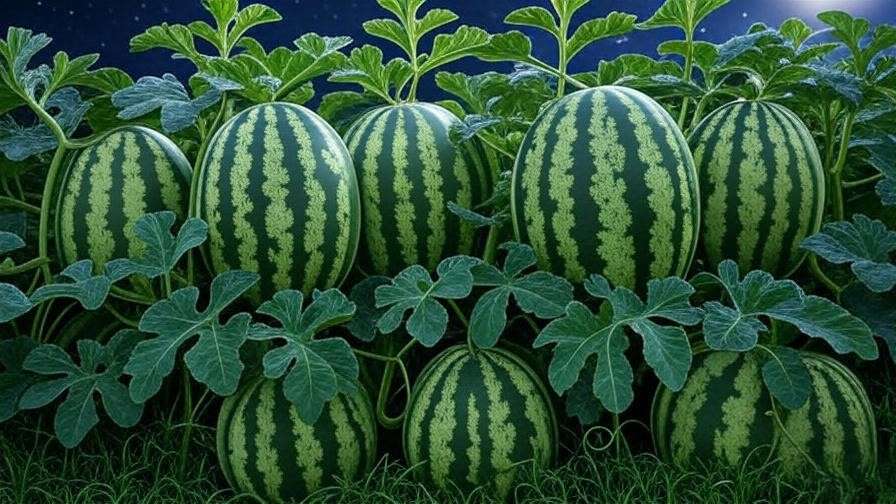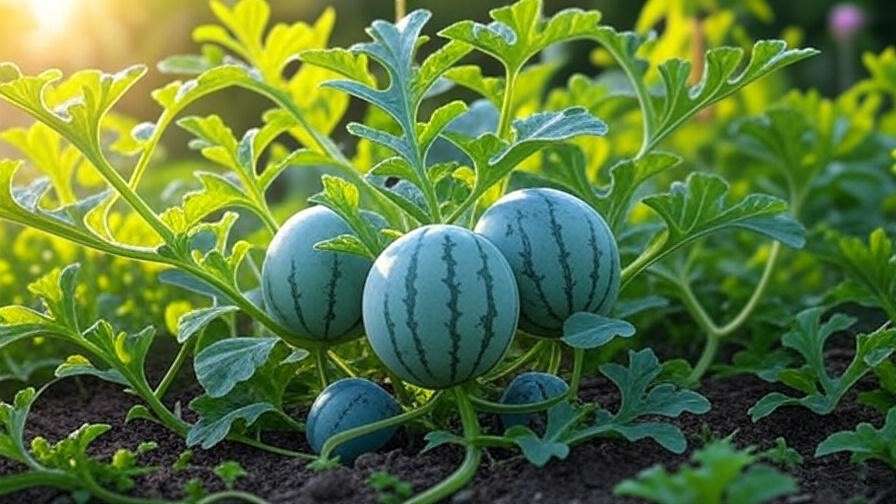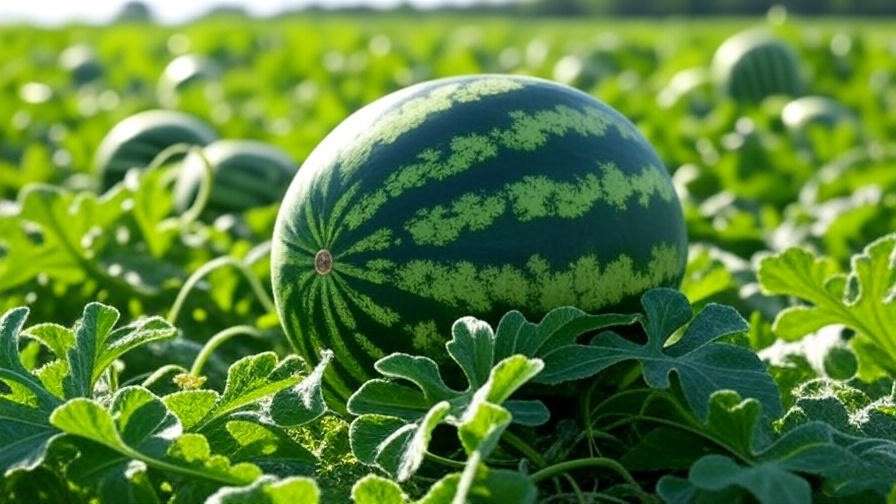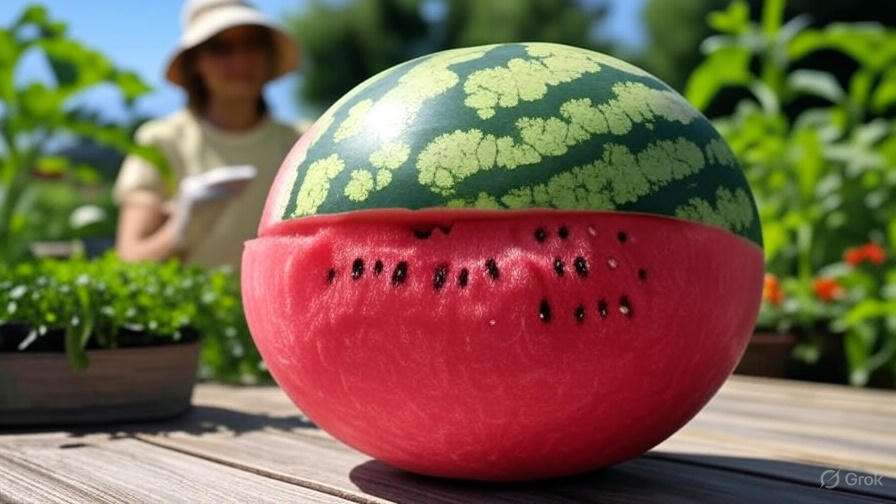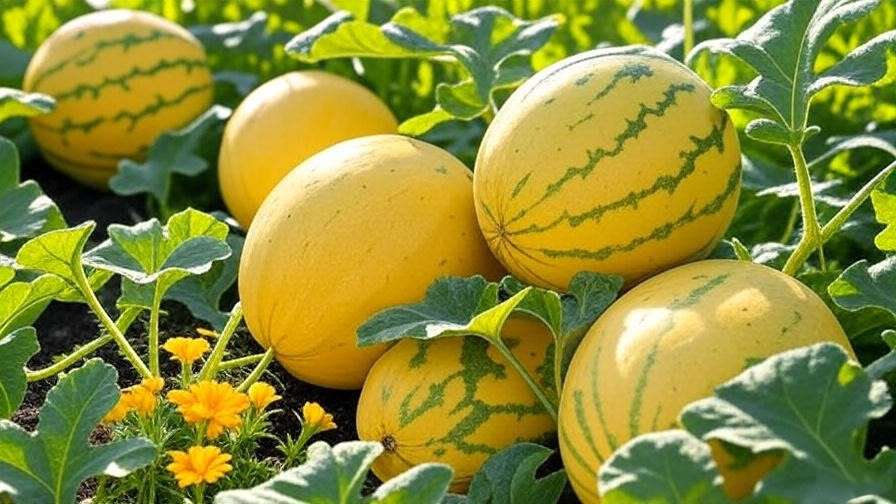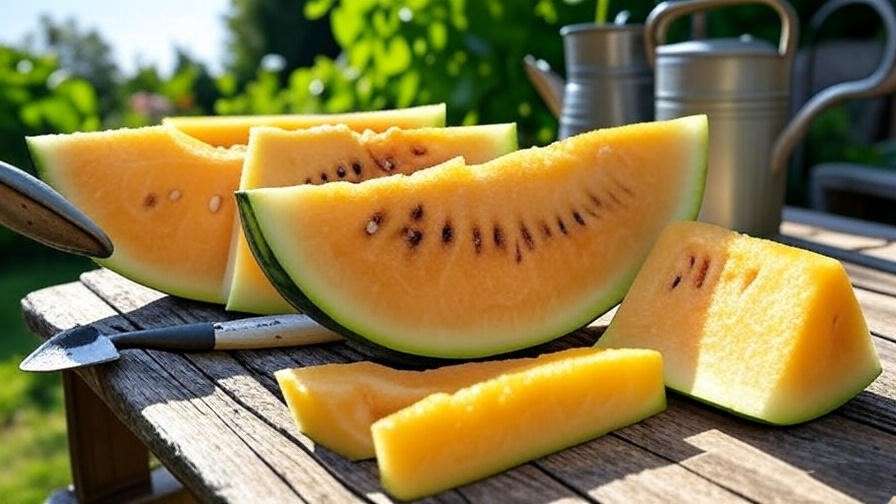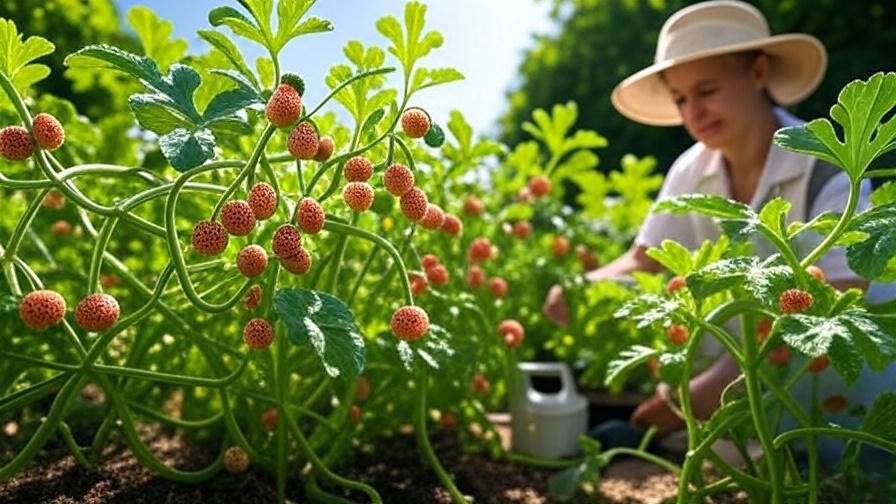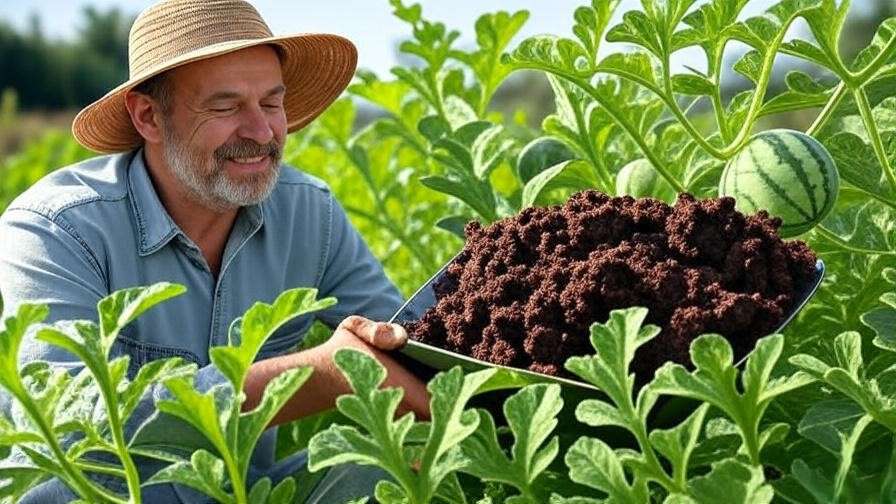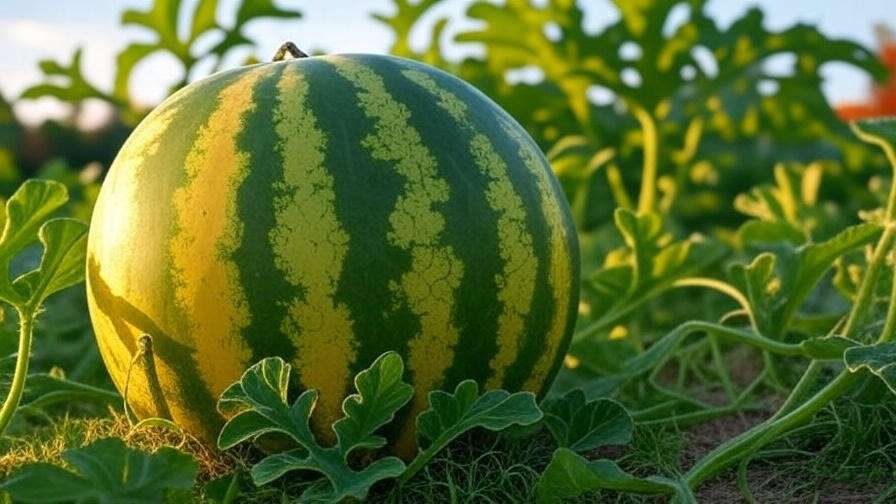Picture this: you’ve spent months nurturing your watermelon patch, eagerly anticipating the moment you slice into a ripe, juicy fruit. But instead of a solid, sweet interior, you find a disappointing hollow heart watermelon—a cracked, empty center that ruins the experience. For gardeners and farmers, hollow heart is a frustrating issue that compromises fruit quality and yield. This comprehensive guide dives deep into preventing and addressing hollow heart watermelon, offering expert-backed solutions to ensure your watermelons are consistently delicious. Whether you’re a home gardener or a commercial grower, these practical tips will help you grow perfect fruit every time. 🍈
Hollow heart occurs when watermelons develop internal cracks or hollow spaces, often due to environmental stress, poor pollination, or nutrient imbalances. It’s a common issue that affects both taste and marketability, leaving growers and consumers dissatisfied. In this article, we’ll explore the causes, diagnosis, and prevention of hollow heart, providing actionable strategies to optimize your watermelon crop. With insights from horticultural research and practical advice, you’ll learn how to grow juicy, high-quality watermelons while avoiding common pitfalls. Let’s get started on your journey to perfect fruit! 🌱
Understanding Hollow Heart Watermelon 🌱
What Causes Hollow Heart in Watermelons?
Hollow heart in watermelons is a physiological disorder triggered by a combination of environmental and biological factors. The primary culprits include:
- Irregular Watering: Inconsistent moisture levels, such as cycles of drought followed by heavy watering, cause rapid fruit expansion, leading to internal cracking. Studies from the University of Georgia Extension note that watermelons require steady soil moisture, especially during fruit development, to avoid stress-induced defects.
- Pollination Issues: Incomplete or poor pollination, particularly in seedless watermelon varieties, can result in uneven fruit growth, creating hollow spaces. Bees are critical for transferring pollen, and insufficient pollinator activity often exacerbates the problem.
- Nutrient Imbalances: Deficiencies in key nutrients like potassium or boron can weaken cell walls, increasing the likelihood of internal cracks. Over-fertilization with nitrogen, on the other hand, promotes excessive vegetative growth at the expense of fruit quality.
- Temperature Fluctuations: Extreme heat or sudden cold snaps during fruit set can disrupt development, causing hollow heart. Heavy rainfall during ripening is another common trigger, as it leads to rapid water uptake by the fruit.
- Varietal Susceptibility: Seedless watermelons, such as ‘Triple Crown,’ are more prone to hollow heart due to their complex pollination requirements compared to seeded varieties like ‘Crimson Sweet.’
How Common is Hollow Heart?
Hollow heart is a widespread issue, particularly in regions with unpredictable weather. According to a 2023 study by the American Society for Horticultural Science, hollow heart affects up to 30% of seedless watermelon crops in high-stress growing conditions. Home gardeners may notice it sporadically, while commercial growers face significant losses in marketability. The prevalence is higher in areas with heavy clay soils or during seasons with erratic rainfall. Understanding its frequency helps growers prioritize prevention strategies tailored to their climate and soil type.
Impact on Growers and Consumers
For home gardeners, hollow heart is a letdown, turning a labor of love into a subpar harvest. Commercially, it reduces the marketable yield, as hollow watermelons are often rejected by buyers due to poor texture and appearance. Consumers may find the fruit less sweet or mealy, impacting satisfaction. Economically, hollow heart can lead to losses of up to 20% in commercial fields, according to Purdue University’s agricultural data. Addressing this issue is critical for maintaining consumer trust and maximizing crop value.
Diagnosing Hollow Heart in Your Watermelons 🔍
Signs and Symptoms
Identifying hollow heart before harvest can be challenging, but certain clues help. Externally, affected watermelons may appear slightly irregular in shape or feel lighter than expected for their size. When tapped, they may produce a hollow, drum-like sound rather than the solid thud of a healthy fruit. Upon cutting, you’ll see internal cracks, cavities, or a central hollow space, often with a fibrous texture. These symptoms are most noticeable in the fruit’s core, where the flesh pulls apart, leaving gaps.
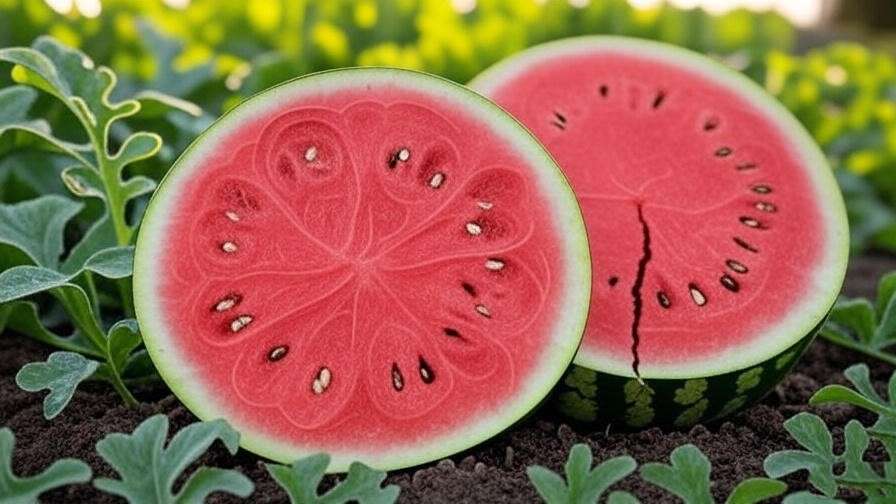
Differentiating Hollow Heart from Other Issues
Hollow heart can be confused with other watermelon defects, such as blossom end rot or internal breakdown. Here’s how to tell them apart:
- Blossom End Rot: Appears as a dark, sunken spot on the fruit’s bottom, caused by calcium deficiency, not internal cracking.
- Internal Breakdown: Results in soft, discolored flesh, often due to over-ripening or disease, rather than hollow cavities.
- Hollow Heart: Characterized by clean, dry cracks or voids in the center, with no external decay.
A diagnostic checklist includes checking fruit weight, tapping for sound, and inspecting a sample fruit from the patch. Early detection helps adjust care practices to save the remaining crop.
When to Check for Hollow Heart
Monitor watermelons during the fruit development stage, typically 20–30 days after pollination, when rapid growth occurs. Pre-harvest checks, about a week before picking, can also reveal issues. Non-destructive methods, like gently pressing the fruit to assess firmness or using a portable density meter, are useful for commercial growers. Home gardeners can tap-test a few fruits to gauge consistency across the patch.
How to Prevent Hollow Heart Watermelon 🚿
Optimize Watering Practices
Consistent irrigation is the cornerstone of preventing hollow heart. Watermelons need 1–2 inches of water per week, depending on soil type and climate. Here’s how to get it right:
- Use Drip Irrigation: Delivers water directly to the root zone, minimizing fluctuations. Install a system with timers for regular watering.
- Monitor Soil Moisture: Use a moisture meter to maintain soil moisture at 60–70% field capacity during fruit set. Avoid overwatering, which can dilute flavor.
- Adjust for Soil Type: Sandy soils drain quickly, requiring frequent, light watering, while clay soils retain moisture, needing less frequent but deeper irrigation.
A 2024 study from Texas A&M University found that drip-irrigated watermelons had a 15% lower incidence of hollow heart compared to overhead watering.
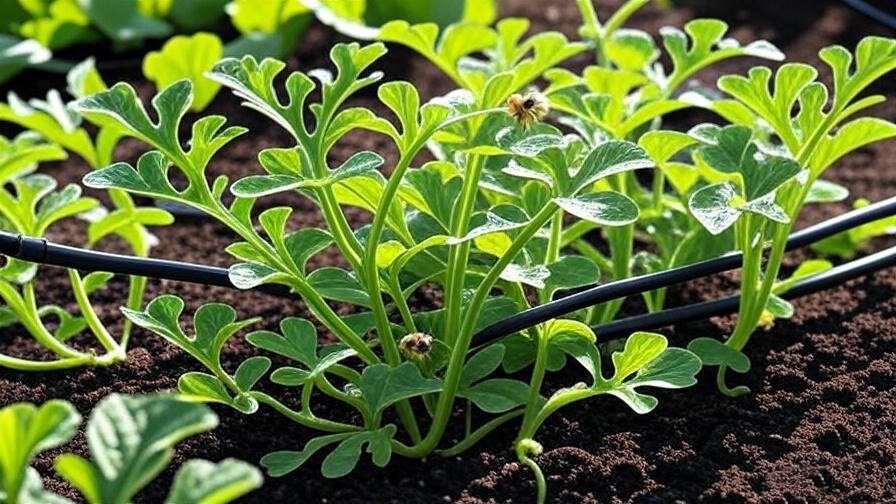
Ensure Proper Pollination 🐝
Pollination is critical, especially for seedless varieties, which require a pollinator variety (like ‘SP-7’) planted nearby. To boost pollination:
- Attract Bees: Plant companion flowers like marigolds or zinnias to draw pollinators. Avoid spraying pesticides during bloom periods.
- Hand-Pollination: For small gardens, transfer pollen from male to female flowers using a small brush. This ensures complete pollination in seedless varieties.
- Check Pollinator Activity: Observe bee activity during morning hours. If low, consider renting beehives for large fields.
A case study from a Florida farm showed that increasing pollinator presence reduced hollow heart incidence by 25%.

Choose the Right Watermelon Varieties
Selecting resistant varieties is a proactive step. Seeded varieties like ‘Crimson Sweet’ and ‘Charleston Gray’ are less prone to hollow heart than seedless ones. For seedless growers, ‘Fascination’ and ‘Melody’ show moderate resistance. Consult your local agricultural extension service for region-specific recommendations, as climate and soil affect variety performance. For example, ‘Sugar Baby’ thrives in cooler climates but may develop hollow heart in hot, humid regions.
Maintain Soil Health and Nutrition 🌾
Healthy soil supports robust watermelon growth. Test soil before planting to ensure a pH of 6.0–6.8 and adequate organic matter (2–3%). Key nutrients include:
- Potassium: Strengthens cell walls, reducing cracking. Apply 100–150 lbs/acre of potassium sulfate during fruit set.
- Boron: Enhances fruit development. Use a foliar spray of 0.5 lbs/acre borax if soil tests show deficiency.
- Avoid Nitrogen Excess: High nitrogen promotes leafy growth, diverting resources from fruit. Follow a balanced 1-1-2 (N-P-K) fertilizer ratio.
Schedule fertilization in three stages: pre-planting, flowering, and fruit development. Soil testing kits, available at garden centers, provide accurate nutrient profiles.
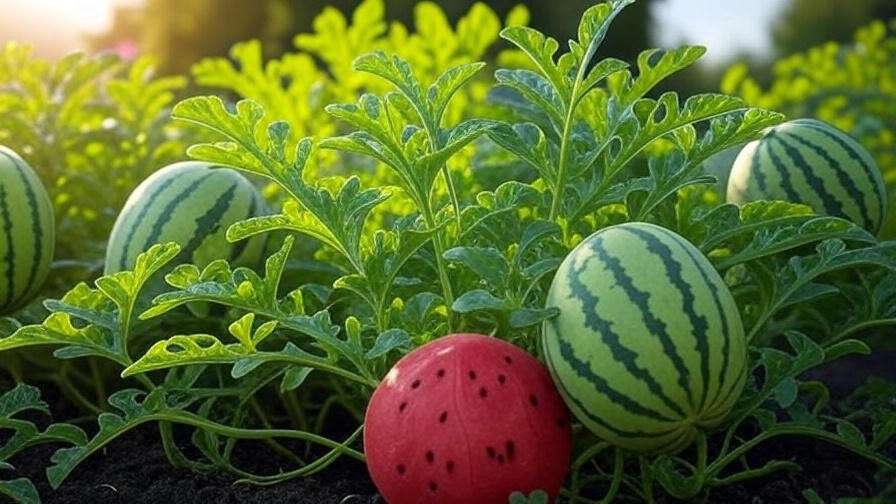
Manage Environmental Stress
Protect watermelons from extreme weather to minimize hollow heart risk:
- Mulching: Use straw or black plastic mulch to regulate soil temperature and moisture.
- Row Covers: Shield young plants from cold snaps or excessive heat.
- Timing: Plant after the last frost date in your region, avoiding heavy rain periods during fruit set. For example, in the Southeast U.S., mid-April to early May is ideal.
A grower in North Carolina reduced hollow heart by 20% by using plastic mulch and adjusting planting dates to avoid June rains.
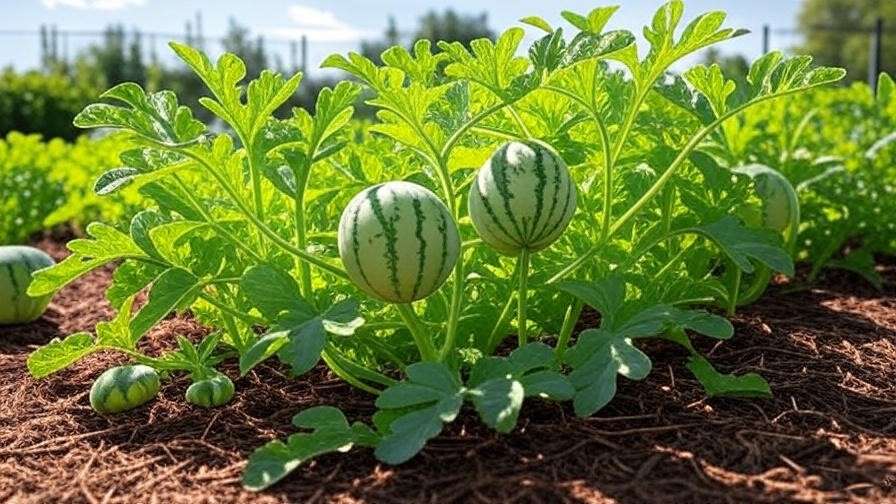
Fixing Hollow Heart Issues in Your Crop 🛠️
Can You Salvage Affected Watermelons?
While hollow heart watermelons aren’t ideal for fresh eating, they can still be used:
- Juicing: Blend the flesh for smoothies or beverages, straining out fibrous parts.
- Composting: Add affected fruits to your compost pile to enrich soil.
- Animal Feed: Offer to livestock like pigs, which tolerate the texture.
For commercial growers, sorting affected fruits for secondary markets (e.g., juice production) can offset losses. Inspect fruits carefully to identify those with minimal damage for limited fresh use.
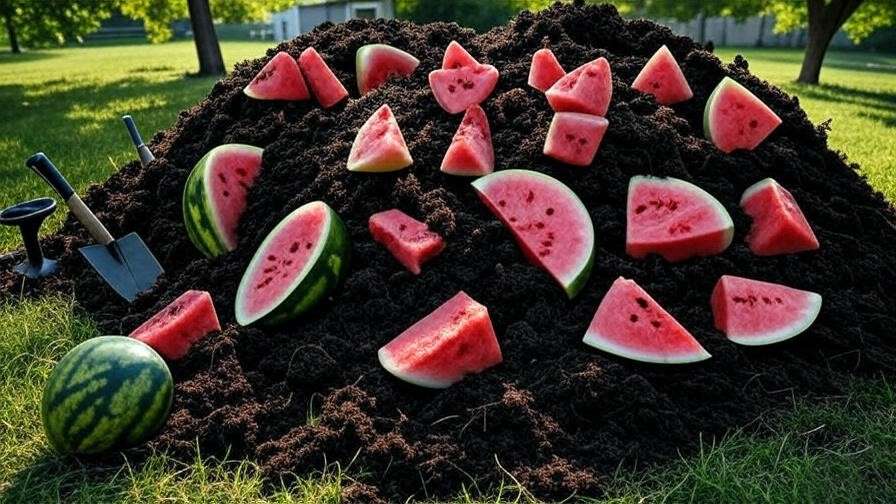
Adjusting Practices Mid-Season
If hollow heart appears early, take immediate action:
- Stabilize Watering: Adjust irrigation to maintain consistent moisture. Check soil daily for the next week.
- Supplement Nutrients: Apply a potassium-rich foliar spray to support remaining fruits.
- Monitor Pollination: Ensure adequate bee activity or hand-pollinate if needed.
These steps can reduce further damage, though results may vary depending on the growth stage.
Long-Term Strategies for Future Crops
Prevent recurrence with these practices:
- Crop Rotation: Rotate watermelons with legumes or grains to improve soil health.
- Record-Keeping: Track weather, watering, and fertilization to identify patterns linked to hollow heart.
- Consult Experts: Work with local extension agents for tailored advice. For example, the USDA’s Cooperative Extension System offers free soil and crop consultations.

Expert Insights and Research 📚
What Science Says About Hollow Heart
Recent research highlights the complexity of hollow heart. A 2023 study in the Journal of Horticultural Science found that boron deficiency during flowering increases hollow heart risk by 18%. Another study from Clemson University emphasized the role of pollination, noting that seedless varieties require 8–10 bee visits per flower for optimal fruit set. These findings underscore the need for integrated management—combining irrigation, nutrition, and pollination strategies.
Innovations in Watermelon Cultivation
Advances in breeding have produced varieties like ‘Exclamation,’ which show reduced hollow heart incidence. Precision agriculture tools, such as soil moisture sensors and drone-based crop monitoring, help farmers detect stress early. These technologies, while costly, can reduce losses by 15–20%, according to a 2024 report from the University of Florida.
Regional Considerations
Hollow heart risk varies by region. In the Southeast U.S., heavy summer rains increase susceptibility, while arid regions like California face challenges from heat stress. Tropical climates, such as in South America, benefit from consistent warmth but require careful irrigation. Tailor practices to your area—check with local agricultural universities for region-specific data.
Common Mistakes to Avoid ⚠️
Preventing hollow heart watermelon requires diligence, but even experienced growers can make errors. Here are the most common mistakes and how to steer clear of them:
- Overwatering or Underwatering: Inconsistent irrigation is a leading cause of hollow heart. Overwatering during fruit set can cause rapid expansion, while underwatering stresses the plant, weakening fruit structure. Stick to a regular watering schedule, using tools like moisture meters to maintain 60–70% soil moisture.
- Ignoring Pollination Needs: Seedless watermelon varieties require a pollinator variety and strong bee activity. Failing to plant pollinators or spraying pesticides during bloom can reduce pollination success. Ensure at least one pollinator plant for every three seedless plants and monitor bee activity.
- Planting Susceptible Varieties in High-Risk Conditions: Varieties like ‘Triad’ are prone to hollow heart in humid or rainy climates. Research variety performance in your region before planting, and opt for resistant options like ‘Crimson Sweet’ in challenging environments.
- Neglecting Soil Testing: Skipping soil tests can lead to nutrient imbalances. For example, low boron levels increase hollow heart risk. Test soil annually and amend based on results to maintain optimal pH (6.0–6.8) and nutrient levels.
By avoiding these pitfalls, you can significantly reduce the likelihood of hollow heart in your watermelon crop.
FAQs About Hollow Heart Watermelon ❓
Is hollow heart watermelon safe to eat?
Yes, hollow heart watermelons are safe to consume, though the texture may be less appealing, and the flavor can be less sweet. The hollow spaces are not caused by disease or toxins but by physiological stress. Use these fruits for juicing or cooking to maximize enjoyment.
Can hollow heart be completely eliminated?
While it’s challenging to eliminate hollow heart entirely, proper management—consistent watering, adequate pollination, and balanced nutrition—can reduce its occurrence to near zero. Choosing resistant varieties and monitoring environmental conditions further minimize risk.
Does hollow heart affect watermelon taste?
Hollow heart can dilute flavor, as the affected fruit often has lower sugar content and a mealy texture. However, mildly affected watermelons may still taste acceptable, especially if used in recipes like smoothies or salads.
How do I know if my watermelon variety is prone to hollow heart?
Check variety descriptions from seed suppliers or consult your local agricultural extension service. Seedless varieties like ‘Triple Crown’ are more susceptible, while seeded varieties like ‘Charleston Gray’ are generally more resistant. Local climate and soil conditions also influence susceptibility.
What’s the best way to test soil for watermelon planting?
Use a soil testing kit from a garden center or send samples to a lab through your local extension service. Test for pH, nitrogen, phosphorus, potassium, and micronutrients like boron. Aim for a pH of 6.0–6.8 and follow lab recommendations for amendments.
Practical Tips for Home Gardeners and Commercial Growers 🌻
To make preventing hollow heart watermelon practical and effective, here’s a step-by-step checklist and tailored advice for different growers:
- Checklist for Preventing Hollow Heart:
- Test soil before planting and adjust pH and nutrients.
- Choose hollow heart-resistant varieties suited to your region.
- Install drip irrigation for consistent moisture.
- Plant pollinator-friendly flowers or use hand-pollination for seedless varieties.
- Monitor weather and protect plants with mulch or row covers.
- Inspect fruits during growth and pre-harvest for early signs of hollow heart.
- For Home Gardeners: Invest in affordable tools like moisture meters (under $20) and focus on small-scale practices like hand-pollination. Companion planting with marigolds can attract bees without breaking the budget. Start with reliable varieties like ‘Sugar Baby’ for easier success.
- For Commercial Growers: Scale up with precision agriculture tools, such as soil sensors or drone monitoring, to optimize irrigation and detect stress early. Work with agricultural consultants to develop a crop rotation plan and secure bulk discounts on resistant seeds. Educate buyers about minor hollow heart to maintain market trust.
- Bonus Tip: Create a “watermelon journal” to log watering, fertilization, and weather conditions. This helps identify patterns and refine practices over time.
Conclusion
Growing perfect watermelons is a rewarding endeavor, but hollow heart can turn anticipation into disappointment. By understanding its causes—irregular watering, poor pollination, nutrient imbalances, and environmental stress—you can take proactive steps to prevent it. Optimize irrigation with drip systems, ensure robust pollination with bees or hand-pollination, select resistant varieties, and maintain healthy soil to grow juicy, high-quality watermelons. For affected fruits, explore creative uses like juicing or composting to minimize waste. With these expert strategies, you’re equipped to tackle hollow heart and enjoy a bountiful harvest. 🍉
Have you encountered hollow hearts in your watermelon patch? Share your experiences or questions in the comments below, and let’s grow better fruit together! For more plant care tips, check out our articles on soil health and pollination techniques. Happy gardening!

